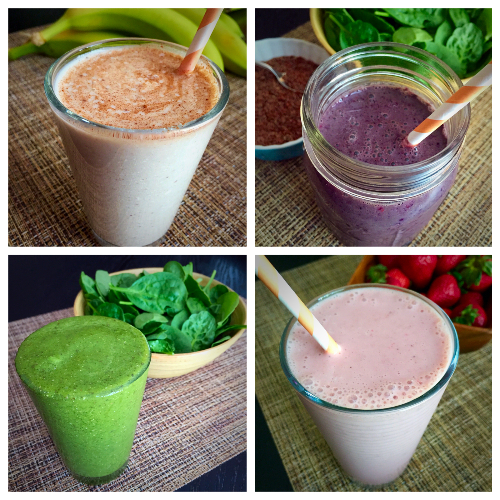Smoothie Secrets from FEED

Refreshing, cool, sweet, and delicious, many turn to smoothies when the weather warms up, in pursuit of a healthy drink. However, there are many traps that lure consumers, turning our slim smoothie into a diet disaster! Read on and learn our SMOOTHIE SECRETS to ensure you are not destroying your diet!
Recent research showed that a diet rich in fruits and vegetables (consumed in smoothie form) resulted in a reduction of total cholesterol in 66 percent of participating students. It isn’t new information that fruit and vegetables are good for our kids’ health, however, getting our kids to consume these foods can be a daunting task! Smoothies provide a quick and delicious way to increase produce in kids’ diets, and ensure that kids are getting important nutrients they need. Beware though, as your good intentions may turn bad! See some of the common mistakes that consumers make when preparing smoothies at home:
MISTAKE #1: Adding juice to your smoothies
Juice is simply sugar. Although it comes from fruit, and is “natural” like table sugar, excess fruit sugar is not good for our bodies. Did you know? In just 12 ounces of 100% juice, there are actually EIGHT teaspoons of sugar! What’s worse? Soda contains TEN teaspoons per 12 ounce glass. Our suggestion? Replace juice in your smoothie recipe with milk or alternative dairy beverage. Make sure it is unsweetened, and pack your smoothie with about 300 mg of calcium, without the added sugar and calories.
MISTAKE #2: Using a powder to increase protein
Protein sports supplements have grown into a $7 BILLION dollar industry. Protein powder has emerged as a popular choice among athletes, dieters, and body builders to preserve muscle mass. However, as typically found, if something looks too good to be true, well, it is! Consumers are learning more about this “perfect protein” and are realizing the FDA does not regulate supplements, thus, what is on the label may not necessarily be contained in the product. Read more about the truth about supplements here.
Rather than choosing a protein powder, add protein in a more natural way. Greek yogurt contains a whopping 25 grams of protein per cup. Not a yogurt fan? Choose cottage cheese! Adding 1 cup of curds and whey boosts protein, calcium, and is naturally low in sugar.
MISTAKE #3: Overloading the fruit
Just like juice, fruit contains sugar. Though fruit provides fiber, vitamins, and important antioxidants for good health, there is always a problem with having too much of a good thing. Keep fruit servings in check throughout the day, and limit to two cups or two handfuls daily. FEED Tip: Rather than two cups of fruit in your smoothie, swap one cup for veggies, specifically spinach. When blended with dark colored fruits, well, I don’t think ANYONE will notice it’s there!
MISTAKE #4: Adding too much sweetener
Honey, agave, and brown rice syrup are all forms of sugar that help smoothies taste sweet, but also pack on the calories. Rather than adding these syrupy sweets, try tossing a couple of pitted dates to your smoothie. Dates are naturally sweet, and are full of fiber, vitamins, and minerals.
MISTAKE #5: Forgetting the nutritional powerhouse
Chia, flax seeds, and matcha are some of the few additives that can turn a typical smoothie into a nutritional powerhouse. Chia and flax are chock full of omega 3 fatty acids, protein, and fiber. They’re beneficial for digestion, and may help with inflammatory conditions. Need a buzz? Matcha, also known as green tea powder, is full of antioxidants and acts as a powerful stimulant, instead of coffee.
Did we whet your appetite? Check out some of our favorite smoothie recipes here:
Blueberry Flax Smoothie
Green Tea Chia Smoothie
Banana Bread Smoothie
Strawberry Mango Banana Smoothie
Want more? Check out Lara’s recent segment on FOX 32 News here: May 29, 2015